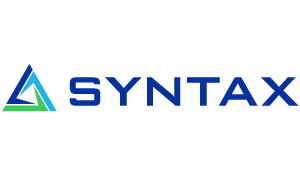SAP Order Management
Filter By
Browse By
- SAP Analytics and AI
- SAP Application Development and Integration
- All SAP Application Development and Integration
- SAP ABAP
- SAP ABAP Development Tools
- SAP ABAP Test Cockpit
- SAP API Management
- SAP BAPI
- SAP Basis
- SAP BRF
- SAP Business Application Studio
- SAP CMS
- SAP Design Studio
- SAP Development Tools
- SAP DevOps
- SAP EAI
- SAP EDI
- SAP Extension Suite
- SAP Fiori
- SAP Fiori Elements
- SAP Integration Suite
- SAP Low Code Application Development
- SAP Low Code Automation
- SAP Netweaver
- SAP Release Management
- SAP UI5
- SAP Web Application Server
- SAP Web IDE
- SAP Business Process Management
- SAP Center of Excellence
- SAP CIO
- SAP Customer Experience
- SAP Data and Data Management
- All SAP Data and Data Management
- SAP BW
- SAP BW/4HANA
- SAP Crystal Reports
- SAP Data Archiving
- SAP Data Center
- SAP Data Governance
- SAP Data Integration
- SAP Data Migration
- SAP Data Quality
- SAP Data Services
- SAP Data Strategy
- SAP Data Visualization
- SAP Data Warehouse Cloud
- SAP DMS
- SAP Document Control
- SAP EIM
- SAP ETL
- SAP ETL Tools
- SAP HANA
- SAP HANA Administration
- SAP HANA Deployment Infrastructure
- SAP HANA Studio
- SAP Master Data
- SAP Master Data Governance
- SAP MDM
- SAP Enterprise Architect
- SAP Enterprise Asset Management
- SAP ERP
- SAP Finance
- All SAP Finance
- SAP Accounting
- SAP AR AP
- SAP Asset Accounting
- SAP Billing Systems
- SAP BPC
- SAP BRIM
- SAP Cash Management
- SAP Central Finance
- SAP Controlling
- SAP COPA
- SAP Cost Center Accounting
- SAP Currency Risk
- SAP e-invoicing
- SAP FICO
- SAP Finance Automation
- SAP Advanced Financial Closing
- SAP Financial Consolidation
- SAP Financial Planning
- SAP FX Risk
- SAP General Ledger
- SAP Global Tax Management
- SAP Hyperion
- SAP Order to Cash
- SAP Payment Processing
- SAP Profitability Analysis
- SAP Rebate Management
- SAP S/4HANA Finance
- SAP SWIFT Compliance
- SAP Treasury Management
- SAP Universal Journal
- SAP Governance Risk and Compliance
- SAP Human Capital Management
- SAP Intelligent Technologies
- SAP Platform and Technology
- All SAP Platform and Technology
- SAP Business Technology Platform
- SAP Cloud
- SAP Cloud Connector
- SAP Cloud Integration Platform
- SAP Cloud Migration
- SAP Cloud Platform
- SAP Cloud Providers
- SAP Cloud Strategy
- SAP Digital Signature
- SAP Container Platform
- SAP HANA Enterprise Cloud
- SAP Digital Asset Management
- SAP Smart Forms
- SAP HEC
- SAP Digital Integration Hub
- SAP Hyperscalers
- SAP Infrastructure
- SAP Messaging
- SAP Quality and Testing
- SAP Security
- SAP Spend Management
- SAP Supply Chain Management
- All SAP Supply Chain Management
- SAP APO
- SAP Asset Management
- SAP Business Network
- SAP Digital Manufacturing Cloud
- SAP Digital Twin
- SAP EWM
- SAP IBP
- SAP Inventory Management
- SAP Label Printing
- SAP Logistics
- SAP Manufacturing
- SAP Manufacturing Automation
- SAP MES
- SAP MII
- SAP MM
- SAP MRO
- SAP MRP
- SAP Order Management
- SAP Plant Maintenance
- SAP PLM
- SAP Production Planning
- SAP S&OP
- SAP SD
- SAP SPM
- SAP Supply Chain Planning
- SAP Track and Trace
- SAP Transportation Management
- SAP System Administration
Supply Chain Management: SAP Order Management
High volume, high velocity, high expectation. These are the three key consequences of the rise of e-commerce and customer expectation today. The smoother and faster the flow, the more orders the company can process, and the quicker the business is able to grow.
Order Management Simply Defined
Order management refers to the process of receiving, tracking, and fulfilling customer orders. The order management process begins when an order is placed and ends when the customer gets the package. Some challenges for companies today include human errors, process backlogs, visibility, transportation errors, and poor communication.
An order management system can automate and streamline the ordering processes, with some companies choosing SAP Order Management for a solution. The entire process generally consists of accepting an order, picking, packing, and shipping the items. The SAP Hybris Order Management module helps organizations streamline the order processes across all the channels. Different search options are available under each category, where users can search for all the orders. Some options are delivery, pickup, or list of all orders available.
Supply Chain Management: SAP Order Management
High volume, high velocity, high expectation. These are the three key consequences of the rise of e-commerce and customer expectation today. The smoother and faster the flow, the more orders the company can process, and the quicker the business is able to grow.
Order Management Simply Defined
Order management refers to the process of receiving, tracking, and fulfilling customer orders. The order management process begins when an order is placed and ends when the customer gets the package. Some challenges for companies today include human errors, process backlogs, visibility, transportation errors, and poor communication.
An order management system can automate and streamline the ordering processes, with some companies choosing SAP Order Management for a solution. The entire process generally consists of accepting an order, picking, packing, and shipping the items. The SAP Hybris Order Management module helps organizations streamline the order processes across all the channels. Different search options are available under each category, where users can search for all the orders. Some options are delivery, pickup, or list of all orders available.
5 Simple Ways to Improve Order Management are:
- Employee engagement
- Sync the customer order system to the inventory
- Make it simple and useful to the customer
- Automate, automate, automate
- Consolidate order channels.
Take control of your process operations and put your customer relationships first. Order management relies upon almost every department in a company. From a customer service team to the warehouse staff, the accounting department through to delivery partners. When mastered effectively, order management ensures a business’s workflow runs smoothly. This is achieved by establishing efficient processes to keep it moving forward, maintaining customer satisfaction, and protecting a company’s reputation.
Benefits of SAP Order Management:
- Increased revenue
- Increased customer satisfaction
- Reduce inventory carrying costs
- Achieve greater employee productivity.
Vendor partners offering software solutions or operational intelligence solutions are: SAP, Gib, or OpsVeda.
Key Considerations for SAPinsiders are:
- Order Management Automation: Ensuring a Successful Implementation in any Environment. Watch the webinar to introduce automation to your order management processes and transform the effects on your cashflow.
- Real-Time Inventory and Order Visibility: Key for Successful Supply Chain Management. Probodh Chiplunkar at Ithena Technologies shares an article on how today’s technological landscape affects business organizations. Transparency can increase customer retention and reach, helping companies achieve successful and profitable omnichannel ordering capabilities.
399 results
-

- SAP MII
 Premium
Premium
How to Integrate Enterprise Systems and an MES Using SAP MII
Reading time: 31 mins
Learn how to develop a composite application in SAP Manufacturing Integration and Intelligence (SAP MII) by mashing up data from ERP and a manufacturing execution system (MES). See how to leverage message services and business logic services for ERP and MES integration. Key Concept The information required for manufacturing execution may come from different systems...…
-

- SAP Accounting
 Premium
Premium
You Are Now a Step Closer to Real-Time Profitability in SAP S/4HANA Finance with Fewer Settlements
Reading time: 10 mins
Learn about a new feature in SAP S/4HANA Finance 1610 that helps you avoid a few of the settlements to Profitability Analysis (CO-PA) and yet achieve real-time updates of data to CO-PA dimensions. This is one innovation among many in account-based CO-PA. Key Concept SAP S/4HANAFinance helps you to avoid some settlements without adversely affecting...…
-

- SAP Digital Manufacturing Cloud
 Premium
Premium
Tips for Mapping Physical Production Operations to the Optimal Manufacturing Type in SAP ECC
Reading time: 16 mins
Management The requirement to integrate your SAP system with a shop floor system can have a profound impact on which manufacturing type you adopt. Learn the characteristics of each manufacturing type in an SAP system and the master data and transactional steps required to implement each in SAP ERP Central Component (ECC). View a decision...…
-
-

 Premium
Premium
Revamp Your Exchange Process with SAP Order to Cash
Reading time: 12 mins
Learn how to exchange or replace a product and have both on the same sales order, enabling a quicker response to the customer that results in lower costs and enhanced customer satisfaction. Key Concept The consolidated exchange process is an exchange process that combines many steps of a typical SAP functionality. It consolidates these typical...…
-

Centralize Forecasting for Customer and Interplant Demands Using Planning Materials
Reading time: 11 mins
In a typical supply chain, organizations have field locations or distribution centers that stock inventory to cater to customer demands (sales orders) and the stocks are replenished by the manufacturing locations via stock transport orders. Without an SAP planning strategy, manufacturing locations would have trouble forecasting for sales orders and stock transport orders. Organizations can…
-

 Premium
Premium
Integrate cProjects with CO in mySAP ERP
Reading time: 17 mins
Collaboration Projects (cProjects) in mySAP ERP is a project system that allows you to structure projects and manage tasks and resources, yet is integrated with accounting. Learn how to use cProjects in conjunction with the project accounting functions in mySAP ERP Central Component(ECC). Key Concept Collaboration Projects (cProjects) supports phase-based project management and focuses on...…
-

 Premium
Premium
Improve Your Company’s Revenues with SAP’s Customer Down Payment Process
Reading time: 17 mins
Learn about the down payment process using the sales and distribution (SD) module, including details about the main customizing settings to be done in the system from a sales and financial point of view. See solutions already implemented in production environments for SD and Financial Accounting (FI) in SAP ERP Central Component (SAP ECC) 6.0....…
-
-

 Premium
Premium
APO Industry Solutions: Extensions for Auto and Retail
Reading time: 12 mins
SAP’s Advanced Planning and Optimization (APO) solution offers 10 extensions for six industries: Mill (Paper, Metal), Chemical/Process, Auto, Retail, Cable, and Defense. In this article, I discuss industry extensions for the retail and auto industries. Key Concept Advanced Planning and Optimization (APO) industry solutions are industry-specific extensions that are integrated with SAP’s core ERP Central...…
-

 Premium
Premium
Keep Your Order-to-Cash Documents’ Integrity Intact within a Global Trade Compliance Program
Reading time: 8 mins
SAPexperrts/GRCWhen considering standard and non-standard order-to-cash processes, you can employ key workarounds to preserve standard SAP documents as the system of record. Understand the document flow of an order-to-cash process within a global trade operation, as well as the effects on plant operations. Then step through four example adjustments you can make to your order-to-cash...…
-

- SAP Production Planning
 Premium
Premium
Closing the Gap Between Shop Floor and SAP ERP with the Shop Floor Dispatching and Monitoring Tool
Reading time: 13 mins
Understand the new features introduced by the new Shop Floor Dispatching and Monitoring Tool and how this tool can improve the short-term capacity leveling and order monitoring in SAP ERP. Key Concept The Shop Floor Dispatching and Monitoring (SFDM) Tool improves the overall user experience of short-term capacity planning for production orders. It also provides...…
Become a Member
Unlimited access to thousands of resources for SAP-specific expertise that can only be found here.
Become a Partner
Access exclusive SAP insights, expert marketing strategies, and high-value services including research reports, webinars, and buyers' guides, all designed to boost your campaign ROI by up to 50% within the SAP ecosystem.
Upcoming Events
Related Vendors
Your request has been successfully sent


